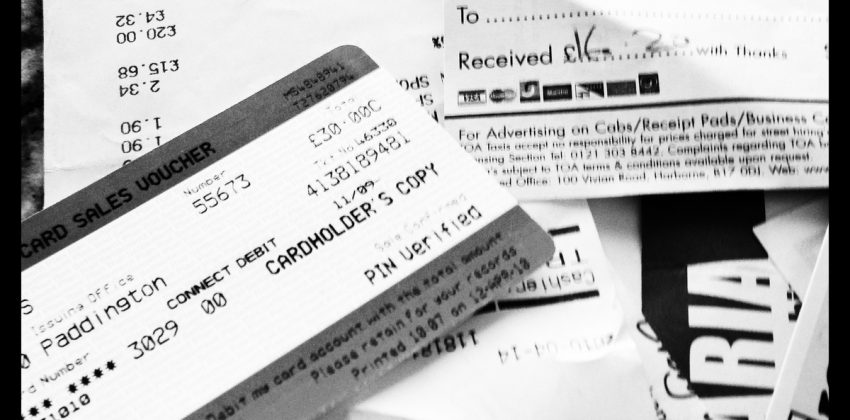The Dreaded Box-Time to Tackle Those Receipts!

February is usually the time that many people start to get under way with tax preparation. With that in mind, we thought we’d start the month by revisiting an article from the past on an issue that many people face: receipts, tax documents, and the best way to deal with the disorganization of the unavoidable, and that box of paper slips that you’re putting off dealing with.
It’s inevitable-like the saying goes, the two things you can count on are death and taxes. To make sure you don’t kill yourself with deductible paperwork next year, start by getting organized this year!
It’s hard to believe that tax time is just around the corner-we just had the New Year!
The time flies, but the important dates continue to rapidly approach. Maybe you’ve been reading our blog & have conquered your cluttered office or desk, or your drawers and, yes, that ONE box stuffed with receipts.
If so, good on you!
But if you like most people, you’re busy. That one box is the box is taunting you to organize it, and you’re being put into the position where past actions (or inaction) are now putting you up against the deadline with your CPA.
It doesn’t have to be this way. A systematic approach to organizing your documents, receipts and pay slips can lead to more free time so you won’t have the spent that one painful weekend for April 15th solely dedicated to the dreaded unorganized filing box.
Here are a couple of great tips from LegalZoom which apply to what we preach here: start organizing now to prevent unnecessary headache!
Decide on a filing system. Whether you use paper clips, accordion folders, color-coded Post-it notes, or some other system, decide on how you’re going to physically group and hold together important paperwork and documents. If you do everything paperless online, that’s great, but be sure to keep electronic records organized in folders. Having a physical paper trail can come in handy in case of an audit.
Gather all income statements and documents. Group together any and all sources of income, which may include W-2, 1098 or 1099 forms as well as paid invoices or any other evidence of income you have received in the past year.
Gather all deductions. Group together documents regarding mortgage interest payments, property taxes, charitable gifts, medical bills, and any other items that may count as deductions.
Gather all receipts. If you have deductions that only have accompanying receipts as opposed to a document with the information, keep them separately in a file or folder.
Use your filing system. This may sound obvious, but in order for a filing system to be most effective, you actually have to use it all year and not just when tax season comes around.
Photo Courtesy of Flickr
